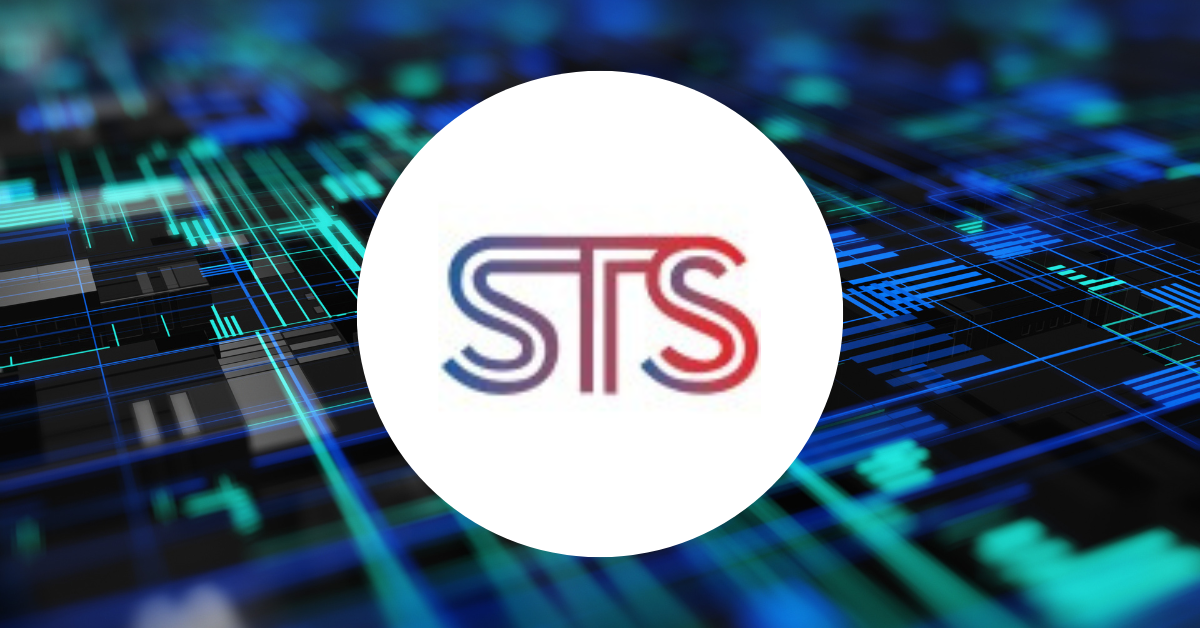Originally published on SalesTech Stars.
Hi Joseph, tell us about yourself and what piques your interest about being in the B2B SaaS market?
I have over 20 years of SaaS Enterprise sales and Go-to-Market experience. This includes my current role as CRO at Portnox, revenue leadership positions at Spredfast (now Khoros) and Upland Software. e.
I approach every interaction with genuine care, whether it is with the sales team, customers and prospects, or my peers. I truly enjoy working shoulder to shoulder with our incredible sales team to deliver unprecedented revenue-growth, expansion, and retention.
The team aspect of it is very important to me. A good example – last month we brought the sales organization to Austin for a sales rally. We spent the time not only talking about the business and key focus areas. In addition, we took part in team building exercises and dinners to get to know and trust each other on a personal level.
I also love planning sessions with my peers on the Portnox Executive Leadership team to think about focus areas for the next six months and into the following year.
It’s invigorating to genuinely solve a challenge for customers. I love it when I have a solution that solves real problems. At Portnox, we are solving cybersecurity issues and challenges for customers – making their environment and devices and employees safer. I sat in the offices of a large customer last week, and the team was so grateful for all the problems we helped them solve. They feel like they’ve taken a giant leap in security safeguards and are helping them create their security strategy.
The combination of teamwork, strategic planning, and the genuine impact we have in solving real problems for companies is what makes being in the B2B SaaS market incredibly fulfilling for me.
Read More: SalesTechStar Interview with Allison Metcalfe, CRO at Cloudinary
As a revenue and sales leader: what are the five fundamentals you follow as a daily practice that you also instill in your team?
As a revenue and sales leader, I adhere to five fundamental practices daily, which I also instill in my team. These practices are essential for maintaining excellence and achieving consistent success, particularly in the competitive SaaS industry.
- Do What We Say We’re Going to Do: Reliability is crucial. Delivering on our promises builds trust and credibility with our clients and colleagues. This practice ensures accountability and fosters a culture of dependability.
- Be On Time: Punctuality reflects our respect for others’ time and our commitment to professionalism. Whether it’s a meeting, a call, or a project deadline, being on time demonstrates discipline and reliability. It’s a simple yet powerful habit that sets a positive tone for all interactions.
- Prep, Prep, Prep: Thorough preparation is non-negotiable. We emphasize the importance of being well-prepared for every engagement, whether it’s a sales pitch, a client meeting, or an internal discussion. This includes understanding the client’s needs, researching their business, and anticipating potential questions or challenges.
- Add Value: Our goal is to consistently add value to our clients’ businesses. This goes beyond selling a product or service; it’s about understanding their challenges and providing solutions that genuinely address their needs. We train our team to focus on how we can help our clients achieve their goals, not just on the features of our offerings.
- Understand the Customer’s Business: Deeply understanding our customers’ businesses is critical. This involves recognizing their unique challenges, industry dynamics, and strategic objectives. By doing so, we can tailor our approach and provide insights that resonate with them, positioning ourselves as trusted advisors rather than just vendors.
In addition to these fundamentals, we emphasize value-based selling. This approach is centered on understanding what the customer is genuinely trying to solve. Our training focuses on identifying the core issues our customers face, such as achieving security compliance goals or protecting their devices, rather than merely highlighting product features. By asking the right questions and truly listening to our customers, we can align our solutions with their specific needs, ultimately delivering greater value and fostering long-term partnerships.
Can you take us through some of the revtech and salestech that you’ve relied on over the years to drive goals?
We rely on several revolutionary technologies to drive our sales goals and optimize our processes. Here are a few that have been indispensable:
Gong is an AI-powered sales listening tool is something I couldn’t live without. Gong records our calls and provides data, analytics, and metrics that are invaluable for understanding and improving our sales interactions. For instance, I can see the percentage of time our sellers talk versus listen on a call, the breakdown of demo versus presentation calls, and the most commonly asked questions from prospects. This data allows us to be proactive in training our sales team, ensuring they are always improving and aligning with best practices.
Another AI-oriented tool, 6Sense, has been critical in identifying the right prospects who are actively in the market for our solutions. It helps us craft the right type of message, ensuring that we’re reaching the right person at the right place and time. The data-driven insights from 6Sense make our sales team incredibly efficient, allowing them to target the right people with precision. I’ve used 6Sense in every organization I’ve been a part of, and it consistently delivers results.
Every member of our sales team uses LinkedIn Sales Navigator. It allows us to message key stakeholders of our customers or prospects one-on-one, fostering genuine connections on a business-oriented but social platform. The ability to connect and engage with prospects on LinkedIn has been a game-changer for us, enhancing our outreach and relationship-building efforts.
These tools have not only helped us achieve our sales goals but have also significantly improved our overall sales strategy and efficiency.
What are the five biggest challenges that modern sellers and revenue leaders face today and what tips would you share against these?
Modern sellers and revenue leaders face several significant challenges in today’s sales landscape. Here are the five biggest challenges and some tips to address them:
- Educated Buyers: Today’s buyers are more informed than ever before. They often don’t engage with salespeople until they are 60-70% through the sales process, meaning they already have a lot of knowledge about your product. This shift requires salespeople to be even more prepared and knowledgeable. Tip: Leverage tools like Gong and 6Sense to gain insights into what your customers are interested in before you even speak to them. Be prescriptive in your approach, demonstrating clear value and providing tailored solutions that address their specific needs.
- Reduced Time with Buyers: With buyers doing much of their research independently, salespeople have limited time to influence decisions. Tip: Make every interaction count. Focus on delivering high-value content and personalized experiences. Utilize data-driven insights to understand pain points and position your product as the ideal solution quickly and effectively.
- Shifting Messaging Needs: The way you communicate with potential customers has evolved dramatically. Buyers now expect more direct and relevant interactions. Tip: Use AI tools to gather data and to tailor messaging. Be clear about the value you bring and how your product can help them achieve their goals.
- Access to Decision-Makers: Getting direct access to ultimate budget holders and decision-makers can be challenging, as they are often focused on high-level strategy rather than tactical buying decisions. Tip: Focus on educating and arming your primary contact with the information and resources they need to sell your product internally. Provide them with compelling use cases, ROI data, and any support materials that can help them advocate for your solution.
- Adapting to Change: The sales environment is constantly evolving, and what worked 18 months ago might not work today. Staying ahead of the curve is essential. Tip: Continuously invest in learning and adapting to new technologies. Encourage a culture of agility and innovation within your sales team, always seeking out new ways to meet (and exceed!) the evolving needs and expectations of your customers.
By addressing these challenges head-on and leveraging the right tools and strategies, modern sellers and revenue leaders can navigate the complexities of today’s sales landscape and drive success.
Take us through your use of AI in salestech and how you enable your teams with upskilling and better processes so that new age tech is used optimally?
We layer in AI to enhance, not replace, human interaction in sales. While AI provides valuable data, it’s still crucial to connect genuinely with prospects. AI tools help us analyze calls and identify prospects, making our sales efforts smarter and more targeted.
However, we do more of our training around developing essential soft skills like empathy and active listening. This approach helps our teams be more prescriptive in their strategies and move prospects quickly to demos and proofs of concept. Ultimately, AI is a tool to make us smarter, but the human element of understanding and curiosity remains key to our success.
A few ways in which you think B2B tech sales should change?
B2B tech sales need to shift focus from an overload of techniques and tools to fostering genuine human connections. Despite the abundance of technology and data, sales remain fundamentally people driven. Instead of relying solely on sales methodologies, sales professionals should prioritize understanding and relating to prospects on a personal level. Be genuinely curious, respond authentically, and leverage your expertise to connect with and help clients, not just to sell to them. This approach will build stronger, more meaningful relationships and drive better results.
Some thoughts you’d share for fellow CROs before we wrap up?
Embrace adaptability and rapid decision-making. Constantly evaluate your internal talent to ensure it aligns with your go-to-market strategy and optimize resource allocation to manage costs effectively. The ability to change and iterate every quarter is crucial—don’t get stagnant. Leverage data and prioritize sales and revenue operations to drive efficiency and informed decision-making. Continuously review and adjust based on data insights to stay ahead and optimize performance.
Try Portnox Cloud for Free Today
Gain access to all of Portnox's powerful zero trust access control free capabilities for 30 days!






